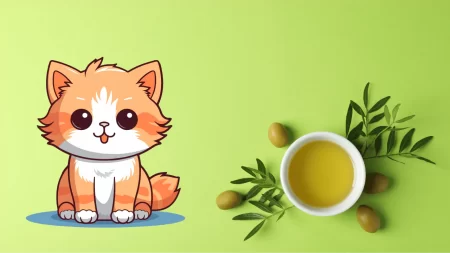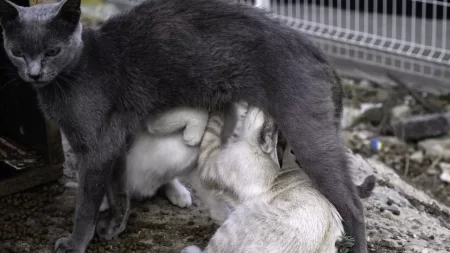The simple answer might be no, but some pricier options provide superior ingredients and balanced nutrition, while others primarily charge more for marketing and packaging.
To make an informed choice, it is crucial to assess the nutritional analysis, ingredient list, and customer reviews of different cat foods.
Remember that a higher price tag does not necessarily guarantee better quality in cat food.
Understanding the Claims of Expensive Cat Foods
Many expensive cat foods claim to offer higher-quality ingredients, nutritional balance, and added benefits for your cat’s health and well-being. Some of these claims may be true, but others may be exaggerated or misleading. Here are some common claims and what they mean:
1. Higher-quality Ingredients
This usually means that the cat food contains more meat or animal-derived products, and fewer grains, fillers, by-products, or artificial additives. Meat is an essential source of protein and amino acids for cats, as they are obligate carnivores. However, not all meat sources are equal, and some may be more digestible and bioavailable than others. For example, a chicken meal may contain more protein than fresh chicken, but it may also contain feathers, bones, or other unwanted parts. The best way to judge the quality of the ingredients is to look at the ingredient list and see if the meat sources are clearly identified and come first.
2. Nutritional Balance
This means that the cat food provides all the essential nutrients that your cat needs in the right proportions. These include protein, fat, carbohydrates, vitamins, minerals, and water. The Association of American Feed Control Officials (AAFCO) sets the minimum standards for nutritional adequacy for cat foods, based on different life stages (growth, maintenance, or all life stages). Any cat food that meets these standards should have a nutritional-adequacy statement on the label. However, some expensive cat foods may claim to exceed these standards or provide optimal nutrition for your cat’s specific needs (such as age, breed, activity level, or health condition). These claims may or may not be backed by scientific evidence or independent testing.
3. Added Benefits
This refers to any extra features or functions that the cat food may offer beyond basic nutrition. These may include improving your cat’s coat condition, digestion, immune system, urinary health, dental health, or behavior. Some of these benefits may be achieved by adding certain ingredients (such as omega-3 fatty acids, probiotics, cranberries, or taurine) or by using a specific formula (such as grain-free, raw, or freeze-dried). However, some of these benefits may not be proven or consistent across different cats. Moreover, some of these benefits may not be necessary or desirable for your cat if they already have a balanced diet and a healthy lifestyle.
Debunking the Myths
While some expensive cat foods may have some advantages over cheaper ones, there are also some myths and misconceptions that need to be debunked. Here are some of them:
1. Lack Of Regulation In The Pet Food Industry
Some people may think that cheap cat foods are unsafe or unhealthy because they are not regulated by the government or other authorities. This is not true. All pet foods sold in the US must comply with federal and state laws and regulations regarding labeling, ingredients, manufacturing, and safety. The Food and Drug Administration (FDA) oversees the pet food industry and enforces these laws and regulations. The AAFCO also provides guidelines and standards for pet food quality and nutrition. However, these regulations do not guarantee that all pet foods are equally good or suitable for your cat.
2. Marketing Tactics
Some expensive cat foods may use clever marketing tactics to persuade you that they are superior or unique. They may use terms such as “natural”, “organic”, “holistic”, “human-grade”, “premium”, or “gourmet” to describe their products. However, these terms do not have clear or consistent definitions or regulations in the pet food industry. They may not reflect the actual quality or composition of the cat food. They may also appeal to your emotions or values rather than your rational judgment.
3. Importance Of Individual Cat’s Needs
Some expensive cat foods may claim to be ideal for all cats or for specific types of cats (such as indoor cats, senior cats, or Persian cats). However, no single cat food can suit every cat, as each cat may have different nutritional needs and preferences. Factors such as age, breed, activity level, health condition, and environment may affect your cat’s dietary requirements. The best way to determine what is best for your cat is to consult with your veterinarian and monitor your cat’s health and behavior.
Considering Factors in Choosing Cat Food
Given that expensive cat, foods are not necessarily better than cheaper ones, how do you choose the best cat food for your pet? Here are some factors to consider:
1. Reading And Understanding Ingredients
As mentioned earlier, the ingredient list can give you some clues about the quality and composition of the cat food. Look for meat sources that are clearly identified and come first. Avoid ingredients that are vague or unknown (such as “meat by-products” or “animal digest”). Also avoid ingredients that are unnecessary or potentially harmful (such as grains, fillers, artificial colors, flavors, or preservatives).
2. Consulting with a Veterinarian
Your veterinarian can help you assess your cat’s nutritional needs and recommend suitable cat food for them. They can also advise you on how much and how often to feed your cat, and how to transition them to a new cat food if needed. They can also monitor your cat’s health and weight and adjust their diet accordingly.
3. Budget Considerations
Of course, the cost of cat food is also an important factor to consider. You want to find a cat food that is affordable and within your budget, but also provides adequate nutrition and quality for your cat. You may also want to compare the price per serving or per calorie of different cat foods, as some may be more economical than others. You may also want to look for discounts, coupons, or bulk deals to save money.
Conclusion
In conclusion, expensive cat foods are not necessarily better than cheaper ones, as long as they meet the basic standards of quality and safety. The best cat food for your pet depends on their individual needs and preferences, which may vary depending on various factors. You should read and understand the ingredients, consult with your veterinarian, and consider your budget when choosing cat food for your pet.







